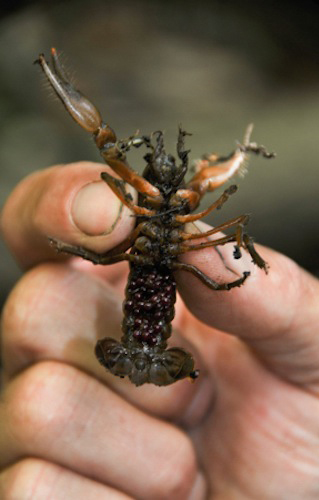
SREs
Short Range Endemics
Short range endemic species have characteristic ecological and physiological traits that:
• Having poor dispersal capabilities;
• Are confined to discontinuous or patch habitats;
• Usually occupy the cooler, wetter terrestrial habitats and permanent aquatic habitats; and
• Have low levels of fecundity.
• Include a high proportion of primitive, genetically conservative taxa.
There are a range of specialised habitats that support short range endemic species across all bioregions of Australia. These can include the terrestrial subterranean ecosystems of caves, relictual terrestrial vegetation communities such low land vine thickets, temperate rainforests, heaths and vegetated gullies. Other landforms including limestone outcrops, Triassic basalt caps, alpine boulder fields.
Freshwater habitats also contain a large array of invertebrates with very limited distributions such as aquifers, perennial upland streams and upland wetlands such as hanging swamps, fens and moors along the Ranges
in each state of eastern Australia, springs, wet caves, arid zone waterholes, artesian mound springs and
saline lakes. The development of these narrow range species is the result of a combination widespread
climate change such as the aridification of Australia since the Miocene and previous glaciations events and the narrow environmental tolerance ranges and thresholds of many ancient and primitive faunas that had adapted to wetter and cooler climates.
These species are considered of high conservation value and at high risk of impacts and extinction due to
their narrow geographic range and narrow environmental requirements. As these species have narrow environmental thresholds and occupy relictual environments, they are ideally suited as fine scale monitoring tools for climate change and environmental management.
"We recommend that all development applications and EIS adopt the WA protocols for sampling
Short Range Endemics, as assessments will be consistent with those in other states."






